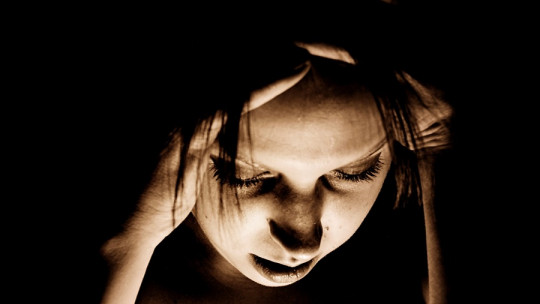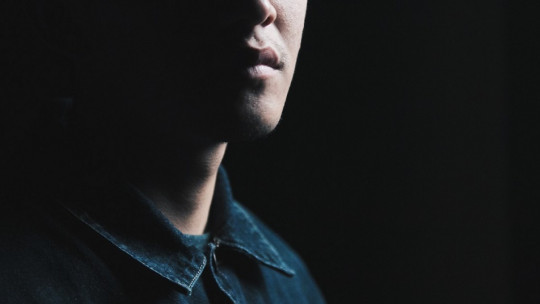
We are all, in some way, afraid of the possibility of suffering from an illness in the future. But when this fear is disproportionate and maladaptive, the person ends up developing a phobia. And when, in addition, the disease in question is meningitis, we speak of meningitophobia
There are more phobias about certain diseases, although this one focuses on brain diseases. In this article we will learn what it consists of, what characterizes it, how it differs from other disorders such as hypochondria, its symptoms, causes and possible treatments.
Meningitophobia: what is it?
Phobias are intense and disproportionate fears of a specific stimulus or situation. This fear makes the person unable to function normally. Thus, phobias differ from fears in that the intensity of the former is much higher, as well as the interference it causes in the daily life of the affected person.
In the DSM-5 (Diagnostic Manual of Mental Disorders) phobias are classified as “specific phobias,” and constitute a type of anxiety disorder. Specific, meningitophobia is the phobia of suffering from a brain disease (especially meningitis).
Brain diseases can be of different types; can be related to genetic and metabolic alterations, cerebrovascular accidents (CVA), infections, tumors, trauma substance abuse, epilepsy…
Meningitis, the disease typically feared in meningitophobia, consists of an infection of the meninges (membranes that cover the central nervous system), usually caused by a virus (in 80% of cases). Meningitis, however, can also be caused by bacteria (between 15 and 20% of cases) or by other factors: poisoning, drugs, fungi and other diseases.
Characteristics
Meningitophobia is about a specific phobia classified as “other types of phobia” in the DSM-5 Let us remember that this manual groups specific phobias into 5 groups, according to the feared stimulus: phobia of animals, phobia of blood/injection/wound, phobia of natural situations, situational phobia and other types of phobias.
Along with it, we find more phobias classified as “other”: phobia of choking, phobia of vomiting, phobia of contracting some type of disease (as in the case of meningitophobia), etc. In children, common phobias considered “other types of phobias” include phobias of people in costumes, clowns, and loud sounds, among others.
Phobia of getting sick
Like meningitophobia, there are more phobias related to the fear of contracting a certain disease. Some of them are: caridiophobia (pathological fear of heart attacks), carcinophobia (pathological fear of suffering from cancer) or luiphobia (pathological fear of contracting syphilis).
These types of phobias They can make the person who suffers from it believe that they have really contracted the disease they fear so much even feeling its symptoms (which in reality “do not exist”).
This causes the person to misinterpret each symptom as typical of the disease, even though they do not have sufficient evidence to do so. As a result of this, checking behaviors, safety behaviors, etc. may appear in the patient (typical of other disorders, such as hypochondria). The same thing would happen in meningitophobia.
Symptoms
The main symptom of meningitophobia is the intense, irrational and disproportionate fear of suffering from meningitis or a brain disease in general This fear appears even in the absence of evidence of suffering from it or being at risk (which is why it is considered a disproportionate fear).
Logically, contracting diseases causes a certain fear or respect (and more so if they are diseases of the brain), but when this fear becomes pathological (excessively intense or disabling), meningitophobia appears.
This fear can manifest itself through other symptoms, such as: elevated anxiety, irritability, nervousness, sweating, dizziness, nausea, vomiting, etc. When fear is very intense, panic attacks can even occur.
Causes
Etiologically, the fear of getting sick (in general) can be related to ancestral and evolutionary responses of the human being, who has been avoiding approaching stimuli or situations that could cause some type of illness, as an adaptive and survival mechanism. Thus, evolutionarily these types of responses had a certain meaning and a certain function.
However, In phobias this adaptive mechanism is dysfunctional, and appears in an exaggerated form This is the case of meningitotophobia (and other phobias related to diseases).
Other possible causes of it are previous traumatic experiences related to a brain disease, vicarious experiences, conditioning, etc., as well as a genetic predisposition to suffer from anxiety disorders.
Differences with hypochondria
In order to correctly diagnose meningitophobia, we must carry out a good differential diagnosis. One of the disorders for which it is advisable to perform it is hypochondria, due to its similar characteristics:
Hypochondria
Hypochondria (called an “illness disorder” in the DSM-5) is a disorder classified within the category of “somatic and related disorders.” Its main characteristic is that the patient expresses high concern and intense fear of suffering from a serious illness.
In some cases, this fear appears due to the conviction of already suffering from the disease. But how does the disorder arise? It arises as a result of the patient’s erroneous interpretations of all their symptoms (or signs), associating them directly with the disease in question. In reality, however, there is no disease (or if there is, the symptoms are not related to it).
The main difference between hypochondria and meningitophobia is that in the former, fear appears when faced with various diseases (or one that is in mind), while in meningitophobia, fear appears only when faced with the possibility of suffering from a brain disease (generally, as we have seen, meningitis). Besides, While hypochondria is a somatic disorder, meningitophobia is an anxiety disorder (like a phobia that it is).
Finally, another distinguishing characteristic between both disorders is that in hypochondria, many other associated symptoms appear (checking behaviors, visits to numerous doctors, histrionic symptoms, erroneous interpretations of symptoms, etc.). On the other hand, in meningitophobia the fundamental fear is the fear of suffering from meningitis.
Treatment
Specific phobias are treated with exposure techniques and cognitive techniques In fact, exposure therapy is the first recommended therapeutic option, since it is the one that offers the best results. This implies that the patient gradually approaches the feared stimuli (through a hierarchy of phobic items ordered by the degree of discomfort they cause).
Exposure therapy can be accompanied by relaxation and breathing techniques (in this case we are talking about systematic desensitization, a type of therapy where a relaxing response incompatible with anxiety is executed during exposure).
In the specific case of meningitophobia, exposure may consist of the patient gradually “approaching” the disease, rather metaphorically; This can be done through access to explanations of the disease, photographs, videos, contact with people who really suffer from meningitis, etc.
In the case of this specific phobia, furthermore, It will be advisable to combine expository therapy with cognitive techniques such as cognitive restructuring since it is a phobia where the stimulus is difficult to “cope” (since the patient does not really suffer from the disease).
In this way, cognitive techniques will help the patient to have a more realistic view of the probability of contracting meningitis, and will allow the intense fear of suffering from it to be reduced and/or eliminated.








